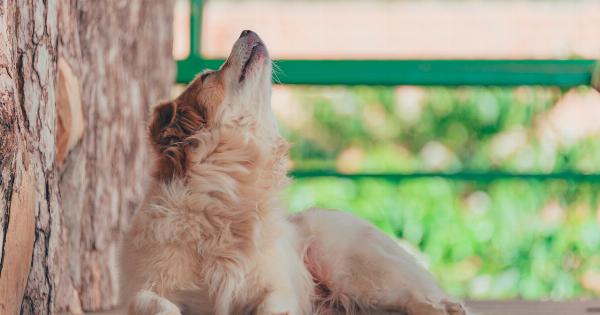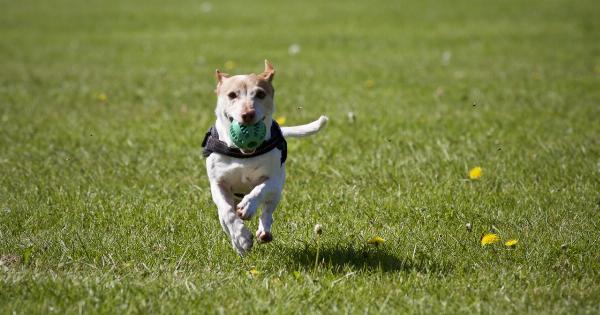Have you ever seen a dog “riding” its human, either perched comfortably on their back or clinging onto their shoulders as if they were riding a horse? This behavior might seem adorable and amusing, but it is also a fascinating display of the complex psychology behind the canine-human bond. Dogs that engage in this behavior do so for various reasons, including a need for security, social bonding, and even a touch of dominance.
In this article, we will explore the psychology behind dogs “riding” humans and delve into the deeper meaning behind this peculiar phenomenon.
1. Seeking Security and Comfort
Dogs are sociable creatures that thrive on the presence and closeness of their human companions. When a dog “rides” its owner, it seeks security and comfort.
Just like when a dog curls up on your lap or snuggles next to you in bed, this behavior allows them to feel safe and protected. By positioning themselves higher up and closer to their owners, dogs fulfill their instinctual need for security, warmth, and a sense of belonging.
2. Bonding and Social Connection
When a dog “rides” a human, it can serve as a bonding activity that enhances the emotional connection between the dog and its owner. Dogs are highly social animals that form strong emotional attachments to their human family members.
By engaging in this behavior, dogs are actively seeking physical contact and closeness, which reinforces the bond between them and their owners.
3. Mimicking Natural Behaviors
Dogs are descendants of wolves, and despite centuries of domestication, they still retain many of their ancestral behaviors.
In a pack, higher-ranking wolves often assert their dominance and establish leadership positions by mounting subordinate pack members. While the behavior of dogs “riding” humans is not entirely the same, it can be viewed as a milder version of this instinctual behavior.
It may be a way for some dogs to display a touch of dominance and assert their position within the family unit.
4. Attention-Seeking Behavior
Some dogs “ride” humans as a way to seek attention and affection. Dogs are highly perceptive animals, and they quickly learn what types of behaviors elicit a response from their owners.
If a dog receives attention, petting, or praise when they “ride” their human, they may continue the behavior as a means to receive the desired attention and physical affection.
5. Playfulness and Enjoyment
For some dogs, “riding” humans is simply a form of playfulness and enjoyment. Dogs, especially young ones, have a natural inclination for play and exploration.
The physical act of climbing on their human and “riding” them can be seen as an entertaining and enjoyable game for dogs. This behavior allows them to engage in a playful interaction with their owners and have a good time together.
6. Lack of Boundaries and Training
While the psychological reasons mentioned above contribute to dogs “riding” humans, sometimes this behavior arises due to a lack of boundaries and training.
If a dog has not been properly taught commands and limits, they may engage in behaviors that seem inappropriate or intrusive, such as climbing on their owners. This emphasizes the importance of establishing clear boundaries and teaching dogs appropriate behaviors through positive reinforcement training.
7. Breed-Specific Traits
Certain dog breeds may be more prone to exhibit “riding” behavior due to their specific traits and tendencies.
For example, smaller breeds that have been bred to be close companions, such as Chihuahuas or Pomeranians, may be more inclined to climb on their owners as a way to stay close and connected. Understanding breed-specific traits can help owners better comprehend why their dogs engage in certain behaviors.
8. Individual Personality and Temperament
Every dog has its own unique personality and temperament. Some dogs may be naturally more affectionate and inclined to seek physical contact with their owners.
These dogs are more likely to engage in “riding” behavior as a way to express their affection and desire for closeness. Understanding and accepting these individual differences are crucial for building a strong and harmonious relationship with your furry companion.
9. Addressing Unwanted “Riding” Behavior
While many dog owners find their pets “riding” them endearing, it may become problematic if it occurs in inappropriate situations or becomes a nuisance. Here are a few tips to address unwanted “riding” behavior:.
a. Redirect the Behavior: Teach your dog alternative behaviors that are appropriate and fulfill their needs for closeness and affection.
For example, encourage them to lie beside you or bring their own cozy bed close to your side instead of climbing on you.
b. Reinforce Boundaries: Establish clear boundaries and communicate them consistently to your dog. Use positive reinforcement techniques to reward desirable behaviors and redirect or ignore unwanted behaviors.
c. Provide Mental and Physical Stimulation: Ensure your dog receives adequate mental and physical exercise to prevent the manifestation of attention-seeking behaviors.
Engaging in regular playtime and providing puzzle toys can help redirect their energy into more appropriate outlets.
d. Seek Professional Help: If the behavior persists or escalates despite your best efforts, consider consulting a professional dog trainer or behaviorist.
They can provide personalized guidance and assistance in addressing the underlying causes of the behavior.
10. Appreciating the Canine-Human Bond
The behavior of dogs “riding” humans serves as a powerful reminder of the unique bond between dogs and humans.
Dogs have an incredible ability to understand and adapt to human behaviors, and their desire for closeness and connection is evident in their willingness to engage in behaviors that might seem unusual or amusing. By understanding the psychology behind dogs “riding” humans, we can deepen our appreciation for the complex and profound relationship we share with our four-legged friends.































